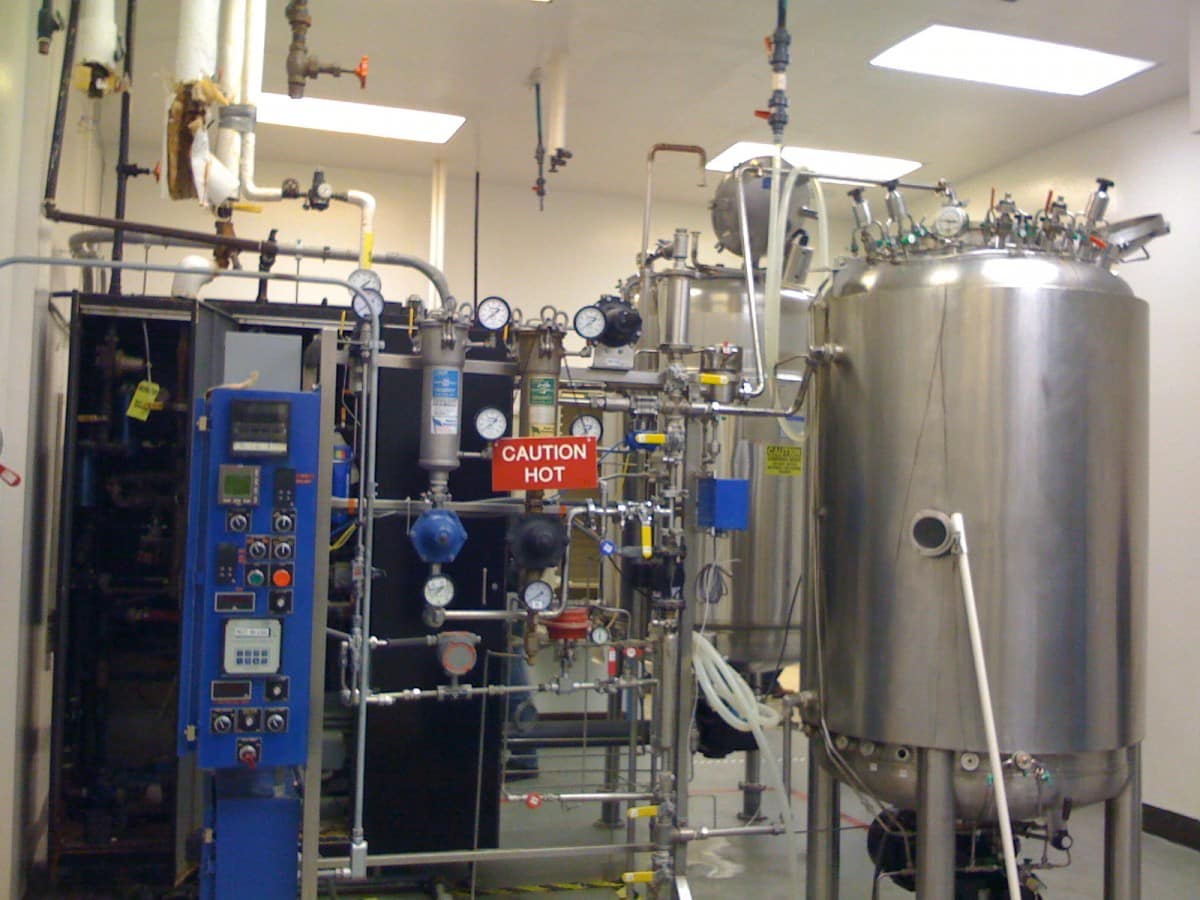
It would be a shame to simply burn wood residues. In the biorefinery, valuable raw materials can be extracted from it. At least theoretically. In fact, different residues require different methods and intensive research is still required. A new pilot plant at the TU Vienna is bringing the goal closer.
Until now, vegetable biomass was simply burned – and at most thermally utilised. This may be a simple solution, but it is neither the best nor the most economical. Conversely, the chemical industry needs vegetable biomass. The TU Vienna is working on a solution to this dilemma.
Now a new pilot plant for the development of biorefineries has been put into operation. This enables raw materials to be broken down into their basic chemical components. In a combination of high pressure and high temperature, various substances can be extracted from the biological material.
Woody Residues
The researchers are focusing on the particularly difficult recycling of woody residues. The category includes things such as straw, wood waste from sawmills or paper mills, shrub cuttings and biowaste from food production.
“Growing plants specifically for use in the chemical industry would not make ecological sense. We are therefore developing processes with which it is possible to make use of residual materials that were previously simply thrown away or at most thermally recycled”,
says Angela Miltner from Professor Anton Friedl’s team at the Institute of Process Engineering, Environmental Technology and Technical Biosciences.
What all woody raw materials have in common is their difficult recyclability. This is due to the lignocellulose they contain, which can only be degraded at higher temperatures. At the same time, it is precisely these raw materials that offer great potential for the production of high-quality sustainable products.
Major Components
Professor Friedl’s team has accepted this challenge and is using a system specifically developed for the problem. This reaches a pressure of up to thirty bar and temperatures of two hundred fifty degrees Celsius. This is sufficient to break down the lignocellulose in the biomass into its main components: Cellulose, hemicellulose and lignin. Depending on the raw material, bioactive substances such as cannabinoids, flavonoids or polyphenols can also be extracted.
Lignin
The lignin is converted into nanolignin particles. The process has been patented by the TU Vienna. Nanolignin particles form many valuable application possibilities such as UV protection in sun creams, lacquers or packaging.
Hemicellulose
Hemicellulose consists of a mixture of different sugars. It can be used for the following purposes:
- Production of sugar substitutes such as xylitol and erythritol;
- Production of pharmacological substances;
Operating Parameters
Solvents such as mixtures of water and ethanol are used to extract the desired substances. For further concentration, the won extract is transferred to an evaporation section. The solvent can then be recovered and reused.
As an alternative to the solvents, the team is researching a concentration process with a special membrane.
“In the coming years, we will use our new plant to investigate exactly how operating parameters such as pressure, temperature, solvent and extraction time can best be combined to extract the desired substances”, explains Professor Friedl.
All system settings can be programmed precisely and executed automatically. Multi-stage extraction processes are also possible.
No Standardization
The team does not believe in a process that meets all requirements. “You always have to adapt the processes to the locally available residual materials”, explains Angela Miltner. Wood waste from the sawmill requires different processes than wood waste from a nursery. You have to know the chemical and process details very well in order to be able to plan the right biorefinery for every requirement, says Miltner.
Biorefinery
Biorefineries are holistic, multifunctional concepts aimed at the high-quality use of biomass. As such, they offer the opportunity to generate intermediate and end products such as chemicals, materials, bioenergy and biofuels in a sustainable manner. The concept is still under development, but has already been implemented. For example, in the production of sugar, bioethanol and biodiesel, where attempts are being made to also use the by-products in a high-quality way.
Also Interesting:
Start-Up of the Day: Plastic Made of Wood and Straw
Grassa!: “Within Ten Years Everyone Will Eat Burgers Made From Grass”
